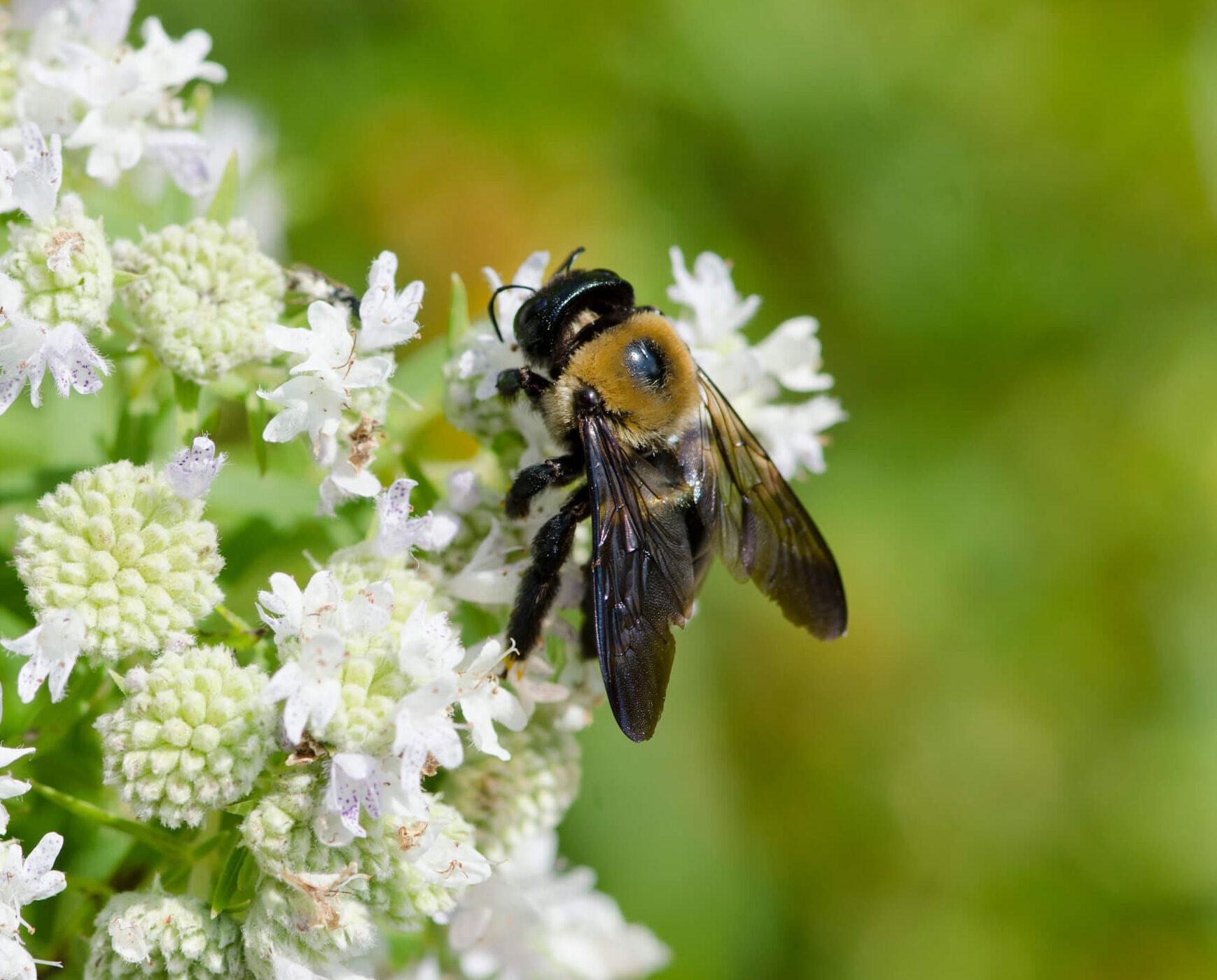
Eastern Carpenter Bee
Xylocopa virginica
Did you know?
- Eastern carpenter bees are part of the Apidae family, which they share with other bees.
- There are many species of carpenter bees.
- They are critical native pollinators.
- They, like most bees, rarely sting.
- Their name partly comes from their ability to make holes in wood.
Young and Family
All carpenter bees do not live in colonies! Instead, they are solitary and come together only to mate. A female will create burrows in wood in which to lay her eggs. Once they are laid, she will leave them. Several generations will return to the same location. Over time, the many tunnels they dig to raise their offspring can weaken the wood.
Adaptations
All carpenter bees are large, meaty bees compared to many other species, similar to the bumble bee. Their size helps them burrow in wood for their eggs. A female large carpenter bee can tunnel through an inch of wood in six days! There are over 500 species of carpenter bee worldwide, but the Eastern carpenter bee is the only species to live in the Eastern United States.
Threat Level
- Unknown
- Common
- Near Threatened
- Threatened
- Endangered
- Critically Endangered
- Extinct in the Wild
Unknown
Not listed by IUCN
Range
Eastern North America
Habitat
Forests and adjacent grasslands
we care about Eastern carpenter bees
The Saint Louis Zoo takes care of Eastern carpenter bees in the Insectarium at the Zoo. We also support them in the wild through the Saint Louis Zoo WildCare Institute Center for Native Pollinator Conservation. Learn more about our efforts.
Find this animal in Discovery Corner

SAINT LOUIS ZOO ZONE
Discovery Corner
Whether you are looking for an animal to meet up-close, or prefer those safely housed behind glass, you'll find it at Discovery Corner.

